'PASADENA’S BEST-KEPT
FAMILY-RUN MIJARES BRINGS COMMUNITY TO THE TABLE
MASTERS OF TASTE CHEFS HOLD COURT AT THE ROSE BOWL + PASADENA VOCAL COMPETITION







FAMILY-RUN MIJARES BRINGS COMMUNITY TO THE TABLE
MASTERS OF TASTE CHEFS HOLD COURT AT THE ROSE BOWL + PASADENA VOCAL COMPETITION






06 Lettuce Celebrate
10 exciting restaurants slated to open
 —By Frier McCollister
—By Frier McCollister
12 The Secret is Out
There’s something special about Mijares
By Frier McCollister20 Masters of Taste
Resilient Michael and Kwini Reed host food fest at Rose Bowl
—By Frier McCollister
24 Highlighting Asian Coffee
Mandarin Coffee Stand delivers new flavors to Pasadena
—By Leah Schwartz26 Wine Showcase
Stylish ideas for storing, displaying your collection at home
—By Kamala Kirk28 Holding History
Uncorking Pasadena’s wine storage industry
—By Luke Netzley30 An Art Form at the Highest Level
Pasadena Vocal Competition shines light on future opera stars
—By Summer Aguirre
31 A Perilous Journey
A Noise Within making much ado in the 1940s
—By Bridgette M. Redman
33 Vroman’s Live Bookstore presents impressive February lineup

—By Arroyo Staff
29 CULINARY CUPBOARD Fudge for friends or flames
fine living in the greater pasadena area
EXECUTIVE EDITOR
Christina Fuoco-Karasinski
DEPUTY EDITOR: Luke Netzley
ART DIRECTOR Stephanie Torres
CONTRIBUTORS Summer Aguirre, Emily
Chavez, Kamala Kirk, Frier McCollister, Bridgette M. Redman, Leah Schwartz
PHOTOGRAPHERS Luis Chavez, Hope
Cheatham, Chris Mortenson, Daniel Reichert
ACCOUNT EXECUTIVES Lisa Chase, Catherine Holloway, Michael Lamb, Zac Reynolds
OFFICE MANAGER Ann Browne
TIMES MEDIA GROUP PRESIDENT Steve Strickbine
V.P. OF OPERATIONS Michael Hiatt
ASSOCIATE PUBLISHER Rebecca Bermudez CONTACT US EDITORIAL christina@timespublications.com
PHONE
(626) 584-1500
FAX
(626) 795-0149
MAILING ADDRESS
PO Box 1349, South Pasadena, CA 91031 ArroyoMonthly.com
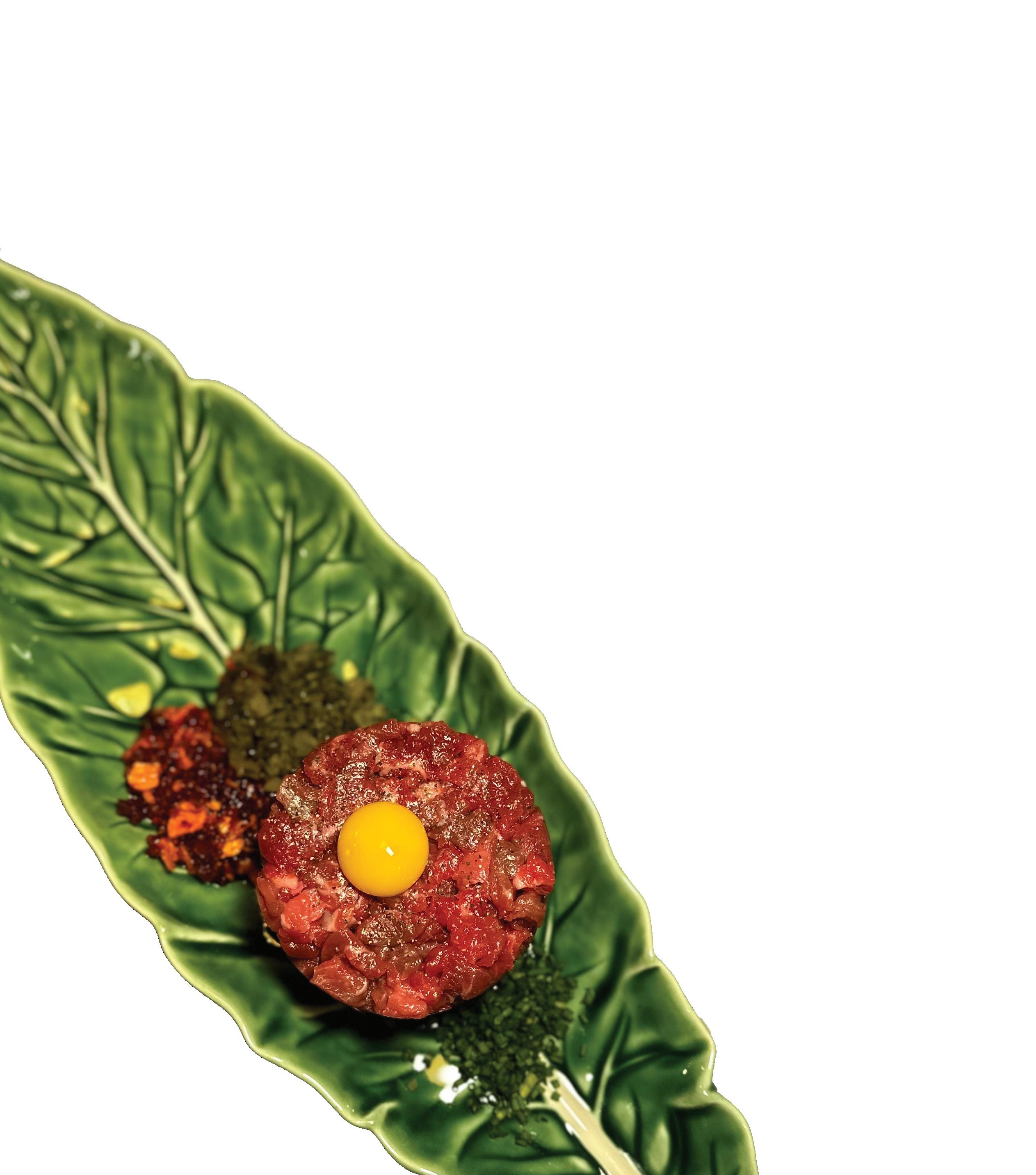
The local landscape for restaurants has been in a churn for the last few years, given the pandemic’s wild ride. There have been as many unexpected closures as there have been surprising openings in the area. Thankfully, life is trying to return to a more stable state of relative normalcy. That said, restaurant culture at large seems to be confronting a looming reckoning with the sustainability of fine dining. Between inflation, ingredient scarcity, and an ongoing labor shortage and accompanying costs, it’s possible that the era of the $500 tasting menu may be coming to an end. When one of the top-rated restaurants in the world — Rene Redzepi’s Noma in Copenhagen — says it’s in its final year of service, citing these insurmountable challenges, it’s a harbinger of a trend that is likely to be seen everywhere soon. Ultimately, it should be a correction that benefits us, the guests.
In this survey of recent and impending openings locally, there is an emphasis on accessibility and relative informality. These new ventures truly reflect the range of diversity and talent in the area. There is also likely something for everyone here. The list is grouped by neighborhood and listed alphabetically.
In any economic climate, few enterprises are riskier to
deploy than opening a restaurant. Peruse this list and then get out there and support the newcomers.
Pasadena
Sundays the Bakery
The team behind DTLA’s popular breakfast takeout window — Wake and Late (on Sixth Street) — is now in rapid expansion and rebranding mode. It’s soon relaunching as Sundays the Bakery, set to open in April as a takeout operation initially, before expanding into a 150-seat dining room.
The original partners John Shoemaker, Alex Sauciuc and Ben Richter started the business in college as a delivery service. On the success of their Sixth Street location, they have hired Chicago’s Alexander Roman as bakery director to help roll out their new campaign. With plans also in place for openings in Hollywood in April and Santa Monica in May, the trio sought a centralized location that could function as a daytime cafe as well as a commissary and staging area for the other locations. They landed on the former site of the Cordon Bleu culinary academy on East Colorado Boulevard in Pasadena.
Wake and Late is known for its well-regarded breakfast burritos and coffee service. Sundays the Bakery will present an expanded breakfast menu when the dining operation opens at the upcoming Pasadena location, later in the summer.
Sundays the Bakery (Opens in April for takeout)
525 E. Colorado Boulevard, Pasadena sundaysthebakery.com @sundaysthebakery
Arcadia/San Gabriel
Bistro 1968
The first version of dim sum shop Bistro 1968 opened as Enlighten Bistro 168 in 2021, amid much positive anticipation and initial approval — particularly on Chinese social media — and then closed abruptly without explanation just three months later. Several stuttered attempts at reopening followed.
Fortunately for local dim sum enthusiasts, the venture reopened in December as Bistro 1968 in an expansive 7,000-square-foot space. The uptick of confusion around the initial closure has dissolved into raves for the dim sum experience presented at the newly opened second-take iteration here.
While the dim sum prices are a bit higher here than other spots in the San Gabriel Valley — $4.88 to $8.88 — the dishes are all made fresh to order and the menu sports a variety of novel plates not seen elsewhere.
While all the classics are here, more unique takes on dishes like the crispy lobster roll, the pumpkin and sweet bean sesame balls, baked peanut mochi and abalone tarts are among the more exotic and original options. While dim sum is served all day, there are also entrees incorporating ma la Sichuan numbing spice. They include Sichuan hen, Wagyu steak bites as well as a char siu take using Iberico ham and honey.
Bistro 1968 is open seven days a week 10 a.m. to 9 p.m. Weekend waits for seating can climb to an hour, so plan ahead!
Bistro 1968
(Opened December 3)
402 S. San Gabriel Boulevard, San Gabriel 626-766-1968


Monarch
When Humberto Leon and his extended family opened their Peruvian Chinese mashup bistro Chifa in Eagle Rock in November 2020, a buzz quickly began building around its novel dishes. Formal acknowledgement and acclaim followed with a Bib Gourmand citation from Michelin in 2021.
Chifa’s notably brisk wave of success propelled the momentum for the very recent opening of the family’s new venture, Monarch, in nearby Arcadia. The new dining room sports a stunningly original and contemporary interior design engineered by Leon, in conjunction with architect Michael Loverich. The overall design of the restaurant — from the furniture and wallpaper to the flatware and merch — has been getting as much popular attention as the food.
As commandeered by Leon’s brother-in-law chef John Liu, the menu at Monarch leans into the family’s Hong Kong background and influence, appropriate to its neighborhood in the SGV, where there is no lack of competition.
Still, the novelty that informed Chifa’s dishes has been easily translated here as well. This is not the usual Cantonese fare encountered in the area. Standout items include black pepper lobster tail ($51); “addicting” curry noodles ($37); and baked pork chop rice in tomato sauce, topped with gruyere cheese ($25).
Monarch is open for dinner from 5 to 9:30 p.m. Fridays to Sundays. Expanded days of operation as well as lunch service should be coming.
Monarch
(Opened January 14)
1212 S. Baldwin Avenue, Arcadia @monarchsgv
Highland Park/Eagle Rock/Glassell Park
Bub and Grandma’s Andy Kadin’s notably successful bakery and fresh bread pop-up has been dominating local farmers markets (including Altadena’s) for several years. He and his team have now opened their first sit-down cafe. Opening formally in January,
Bub and Grandma’s bread-baking brilliance has been channeled into a menu that features breakfast and lunchtime fare.
The menu is composed of a selection of five breakfast sandwiches ($7 to $8) including an onion omelet version; 11 lunch sandwich options ($9 to $12) including a braised brisket, a crab and a vegan “rainbow” with pickled veggies; “Bub’s Toasts” with a choice of house-made sesame, seeded, challah or focaccia bread ($3 to $8); and a salad selection ($12 to $14), featuring a smoked trout turn and a veggie “chop suey” that uses “ranch cottage cheese.”
Imagination and acute artisanal attention typify the fare at Bub and Grandma’s. It’s been fielding a bit of neighborhood attention, so get
down there and get in line.
Bub and Grandma’s 3507 Eagle Rock Boulevard
Glassell Park
Bubandgrandmas.com
Otono Mercat
Locally beloved Iberianinfluenced chef Teresa Montano is expanding on the sustained success of her restaurant Otono in Highland Park, with this new concept. While Otono presents as a rustically elegant Spanish tapas and paella salon, with a tightly curated wine list, the new space will be quite different.
Housed in the same building as Otono in Highland Park, Otono Mercat is conceived as a market cafe, bar and event space. The retail market area will feature a variety of imported culinary products from

Spain, like conservas, bocadillos, vermouth and olive oils.
The new space will host a variety of events as well. Expect everything from FC Barcelona viewing parties to guest chef and bartender pop-up demos.
Otono Mercat
(Opening late spring)
5717 N. Figueroa Street, Highland Park
otonorestaurant.com
Queen Street
The property located on the west end of York Boulevard, on the border of Highland Park and Eagle Rock, has long been rumored to be the next venture from Holly Fox, chef Ari Kolender and their company Last Word Hospitality. The couple are known for previous successes with Found Oyster and Same Same Thai in east Hollywood, as well as Red Dog Saloon in Pioneertown. The new prospective venue has been crowned with the working moniker “Queen Street.” It’s an apparent reference to legendary Queen Street Grocery in Charleston, South Carolina, and Kolender’s upbringing in the region.
It’s also a strong hint at the prospective menu’s emphasis. Lowcountry Southern cuisine incorporating fresh seafood and heirloom grains will likely be the focus here. She-crab soup? Let’s hope so. It’s definitely time for a fresh take on shrimp and grits!
Queen Street
(Opening 2023 TBD)
4701 York Boulevard, Eagle Rock
Villas Tacos
Since launching his influential local taco pop-up from his grandmother’s carport on Avenue 50 in Highland Park, the ambitious Victor Villa’s tacos and salsas have garnered well-deserved local accolades and acclaim. Villas Tacos was the first back-to-back winner of LA Taco’s Taco Madness competition in 2021 and 2022, as also featured in a short documentary film. It’s a note of true popular distinction.
Bouncing from the carport to several different regular weekend pop-up locations along York Boulevard, Villas has successfully grown his operation and is expanding it dramatically soon.
In May of last year, Villas
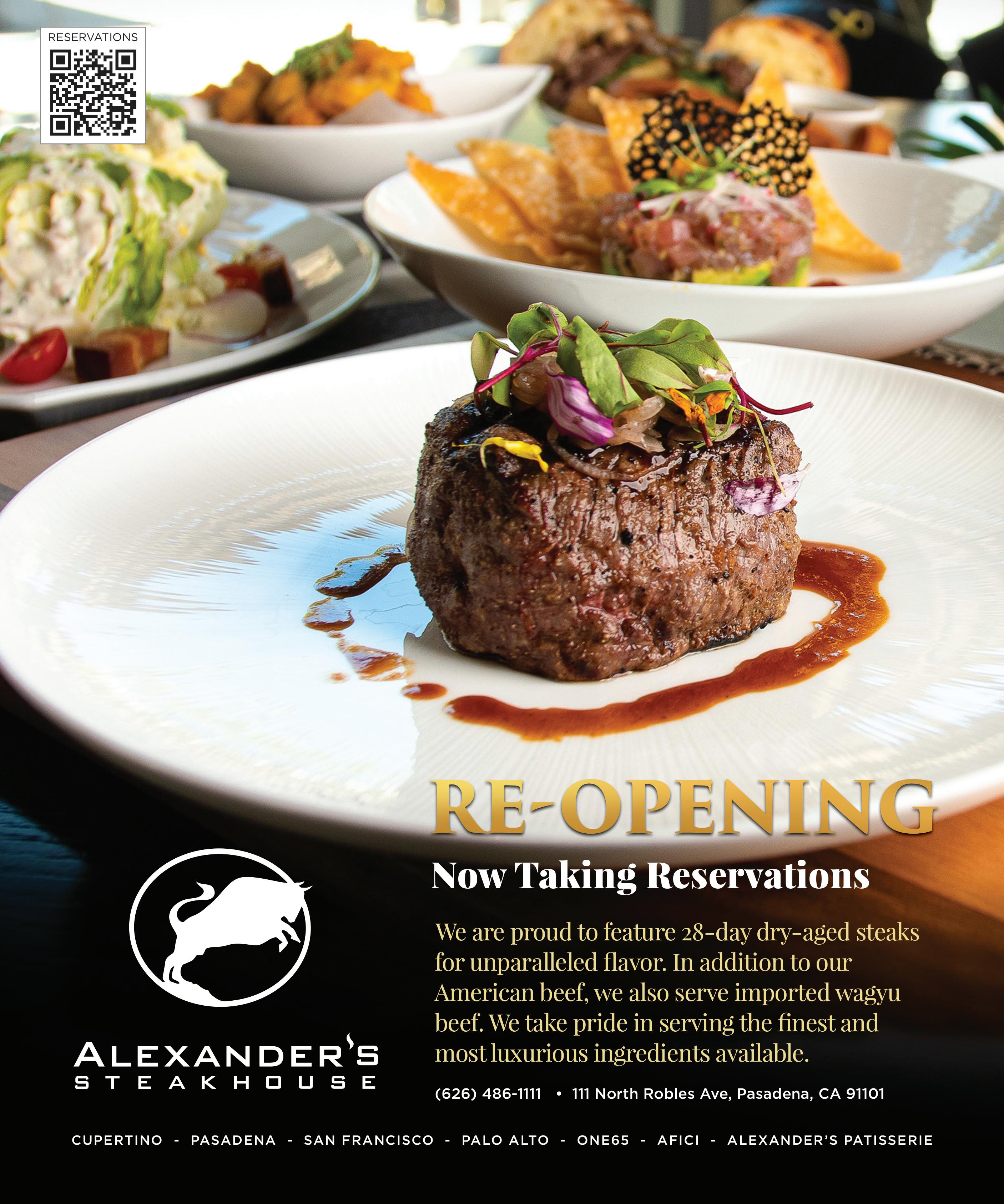

continued from page 8
scored a $100,000 grant from Mexican brewer Estrella Jalisco to help fund the opening of his first actual restaurant. As Villas has long promised, he will open his first formal brick-and-mortar storefront on an undisclosed block of Figueroa Boulevard in Highland Park. With a prospective opening in February, the new storefront represents one of the more anticipated launches in the neighborhood this year.
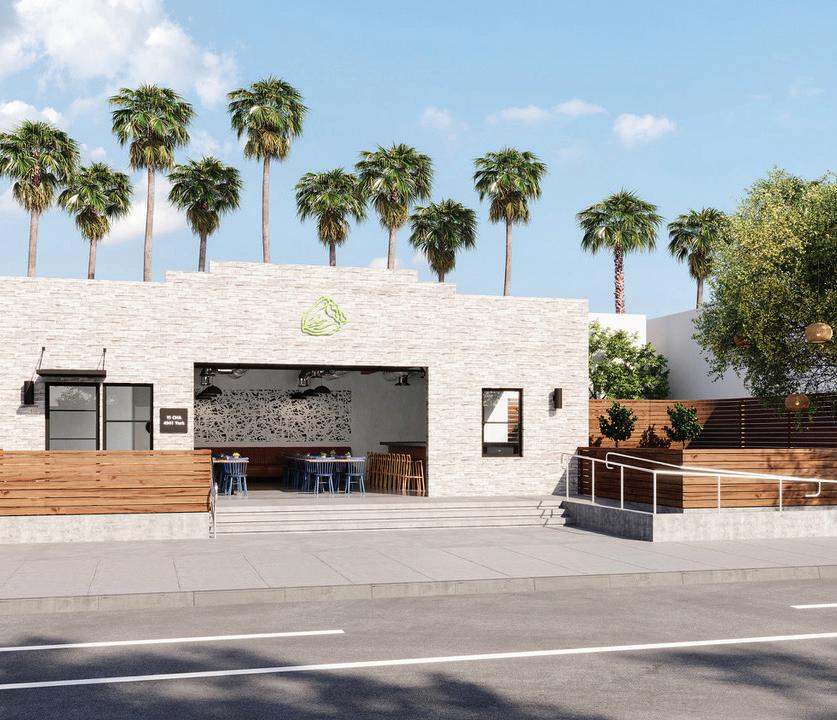
Taco connoisseurs may long for the routine of lining up on the sidewalk along Avenue 50, while watching Villas and his taqueros bustling around the three smoking grills. Still, the experience of manically gobbling down tacos off the hood of a car, while juggling salsa containers may not always be missed. The new venue’s dining room should comfortably seat a small neighborhood crowd and the menu will likely expand. Stay tuned to Instagram for updates.
Villa’s “Estilo LA” tacos are generously portioned and typically served on queso-laced blue corn tortillas (sourced from east LA’s Kernel of Truth tortilleria) always topped with fresh guacamole. In the old days, every order was accompanied by nine samples of salsa, all homemade in Villas’ abuela’s kitchen. Also note that Villas’ vegan taco preps are not to be ignored, even by adamant carnivores.
Villas makes no secret of his secret ingredient: love.
Villa’s Tacos
(Opening February)
TBD Figueroa Street, Highland Park @villastacoslosangeles

Yi Cha
Pasadena resident chef Debbie Lee — known most notably for her appearance and winning performance on the fifth season of Food Network’s “Next Food Network Star” — has unveiled plans to open a new venue in Highland Park.
Lee was perhaps a bit ahead of her time with her Ahn-Joo food truck launch in 2010, featuring rustic Korean comfort food. She anticipated a trend that was ultimately reflected in the success of recent Downtown operators like Yangban Society and Shiku. Notably, Lee is also the author of the cookbook “Seoultown Kitchen.”
Calling on her roots, the menu at the highly anticipated new location is to be premised around small-plate Korean delicacies in a setting evoking a Korean “hanok” gastropub format.
The spacious lot will include a generous outdoor patio and kitchen garden, where Lee plans to conduct community events and classes.
Named for the Korean expression indicating a “second round” of drinks, Yi Cha is tentatively scheduled to open in summer. The menu’s details remain to be seen. However, it’s definitely a fresh style in the neighborhood that should fit nicely in the gourmandizing wheelhouse of the locally ubiquitous, hipster foodies.
Yi Cha
(Opening midsummer)
4941 York Boulevard, Highland Park
Elysian Park/Frogtown
Lingua Franca
This is a long-anticipated opening from Peter and Lauren Lemos, who have been operating the successful sandwich shop operation, Wax Paper, since 2015, with locations in Chinatown and nearby Knox Street in Frogtown. Their sandwich shops are known for generously portioned and creative sandwich compositions named for local, public radio personalities (the
Italian hoagie-style “Larry Mantle” for example).
The new venture is intended to be an all-day, accessible local bistro serving mindful New American comfort food for breakfast, lunch and dinner.
The venture was revealed several years ago, but the buildout at the new location experienced a variety of delays. Set to open in the first week of this month, its opening has definitely been on the radar of local culinary enthusiasts for some time.
The project has been in soft opening mode for January and is advertising daily hours from 9 a.m. to 10 p.m.

Lingua Franca
(Opening February 1)
2990 Allesandro Street, Elysian Heights/Frogtown linguafrancaco.com
Za Za Za
Arroyo-adjacent Elysian Park will also soon be host to this new concept from the Mexico City-
based restaurant group, responsible for the wildly successful Cha Cha Cha, which opened its stunning outdoor, rooftop dining room in DTLA’s Arts District in 2021.
Expect the new operation to feature a seafood-forward, mariscos-centric menu, inspired by the regional cuisines of Nayarit and Baja. Ceviches, agua chiles and cocteles should be expected. That said, executive chef Paco Moran presided over a pop-up preview at the Arts District space last year, which featured a spectrum of dishes including everything from an al pastor swordfish taco to an impressively composed Torre de mariscos, seafood tower.
In addition to a sleekly designed contemporary dining room, look for a menu of creative cocktail options as well.
Za Za Za
(Opening mid-February) 1993 Blake Avenue, Elysian Heights/ Frogtown @zazazarestaurant
The motto at Mijares restaurant is “Pasadena’s best-kept secret since 1920.”
The family-run operation, now in its fourth generation, celebrated its 100th anniversary in February 2020 to much local fanfare. After successfully running its massive 600-seat dining room as a beloved and venerable dining institution over so many decades, it’s difficult to believe that anyone in town isn’t in on the secret by now.
That said, when considering the wider local landscape of legacy family-owned Mexican restaurants in Los Angeles — El Cholo, El Coyote or Casa Vega, in the Valley, for instance — Mijares isn’t often included, even though it’s arguably the oldest of the bunch still in active operation.
Four generations of the extended Mijares clan have worked in the restaurant and many members of its loyal staff have been with the restaurant for 30 years or longer. That degree of loyalty always indicates that something is being done right. Chef Antonio Campos has been with Mijares for 35 years.

If there is a secret, he pointed to it, “The family here is fantastic, and everyone here is family. Everyone here is happy.”
Family is the undeniably recurrent theme at Mijares. The celebratory adulation that accompanied Mijares’ 100th anniversary observance was followed quickly and unexpectedly by the onset of the COVID-19 pandemic and subsequent lockdown that forced restaurateurs to “pivot” into a pickup and delivery model to maintain their staff and operations.
The pivot at Mijares was particularly radical and challenging. The business was founded on providing accommodation for large parties and group festivities, events that effectively vanished for over the two years of uncertain and changing pandemic protocols and restrictions.
Still 103 years of painstaking at-
tention to quality and service reflects an undeniable degree of fortitude, determination and resilience. Perhaps needless to say, if one has stopped by recently, Mijares has weathered the storm and appears to be thriving.
On a rare sunny morning in January, third-generation Mijares scion Tom Recendez was joined by his niece, Mary Alice Recendez, as staff prepared the banquet room for a monthly mixer hosted for JPL employees. They recalled the dark days of the lockdown together.
“We really didn’t (see the pandemic coming),” Tom says.
“What we had to do was cut down to a skeleton crew, which was very small. Mary Alice, my niece and I, ran the front of house and our chef, who we’ve had for 35 years, Antonio Campos, and just a few of our cooks and dishwashers were doing the back of house. Packing orders to go, answering the phones and running. We would do a lot of running. We ran the food to your car. We would run and meet you outside.”
Pre-pandemic, Mijares routinely carried nearly 70 staff members. As they opened in the lockdown, eight staff including Tom and Mary Alice maintained the operations on their own. “To be honest, it ran as best as we could run it. We did the best we could with what we had,” Tom concludes.
The senior members of the family were not able or willing to come out in the early days of the pandemic lockdown.
“My uncle and I came together immediately,” Mary Alice says.
“My aunt is older and didn’t feel comfortable being out in public. My grandmother is in her 90s. My mother has asthma and diabetes. They had to stay home. My uncle and I were the ones who could really be here.”
“We’re the youngest,” Tom inter-
continued on page 14
VERGOLA® is the original opening and closing louver roof system, invented in 1984 and continually improved upon for today’s stylish alfresco living. 35 years later, here’s why the award-winning VERGOLA® is still the number one choice for California’s climate. Allows you


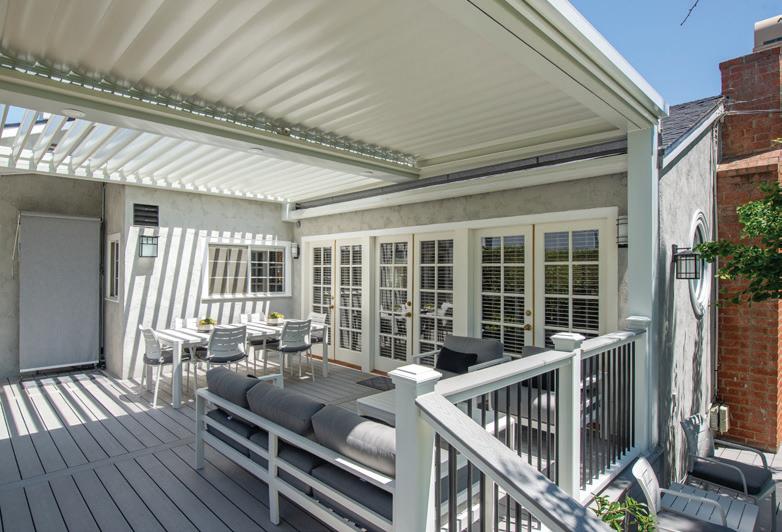





jects.
Mary Alice continues, “It was a huge eye opener. We were able to look at our demographic and reevaluate what we needed to sell in order to keep the doors open. That was difficult. We kept under 10 people in the establishment, while maintaining meetings to discuss what we were going to create in order for people to come to our front door. We had to come up with meals that could bring people to us and something that they could share safely. That was really interesting as something to come together and (solve) as a family. That was definitely a bit difficult, but we got through it together.”
“Sales were pretty low some days. It was pretty depressing. What really helped us out was when we were allowed to sell margaritas to go,” Tom notes. “Another thing that really helped us out — it’s not something I like to point out — but owning the property, not having to pay a lease.”

The slow climb out of the pandemic restrictions presented additional challenges as well.
“It was interesting rehiring, while maintaining capacity with our guests and social distancing. It was hard to manage,” Mary Alice notes.
“We figured things out together, which made us stronger in the end. Having to reevaluate the way we set up and to ensure that (customers) knew we had their safety in mind, that was our top priority. It was really great to do together. It would have been a lot harder without each other.”
Mijares began when Jesucita Mijares landed in Pasadena in 1920, having fled her hometown in Jalisco, following the tumult of the Mexican revolution. Intent on establishing a modest tortilla factory, she bought the initial parcel for $8,000.
Cobbled together from two loans, one from a physician acquaintance and another from a prospering local auto mechanic, the original site was on Fair Oaks Avenue and Pico Street in Pasadena. Soon, she began serving a simple menu of tacos, tamales and enchiladas to the locals.
The operation moved to its more expansive location just up the block on Palmetto in 1944. The property also provided housing for the extended Mijares family. The restaurant’s matriarch lived on the property until she died in 1988. In 2006, the family dwelling was turned into the current banquet hall. By the way, nimble resilience
is not new for the Mijares family. In 1979, arson destroyed much of the existing restaurant. Tom’s mother, Alicia, quickly managed to open the Mijares restaurant annex on North Washington Boulevard, while they rebuilt on Palmetto Street. The annex operated successfully for the next 40 years, when it was closed at the onset of the pandemic lockdown.
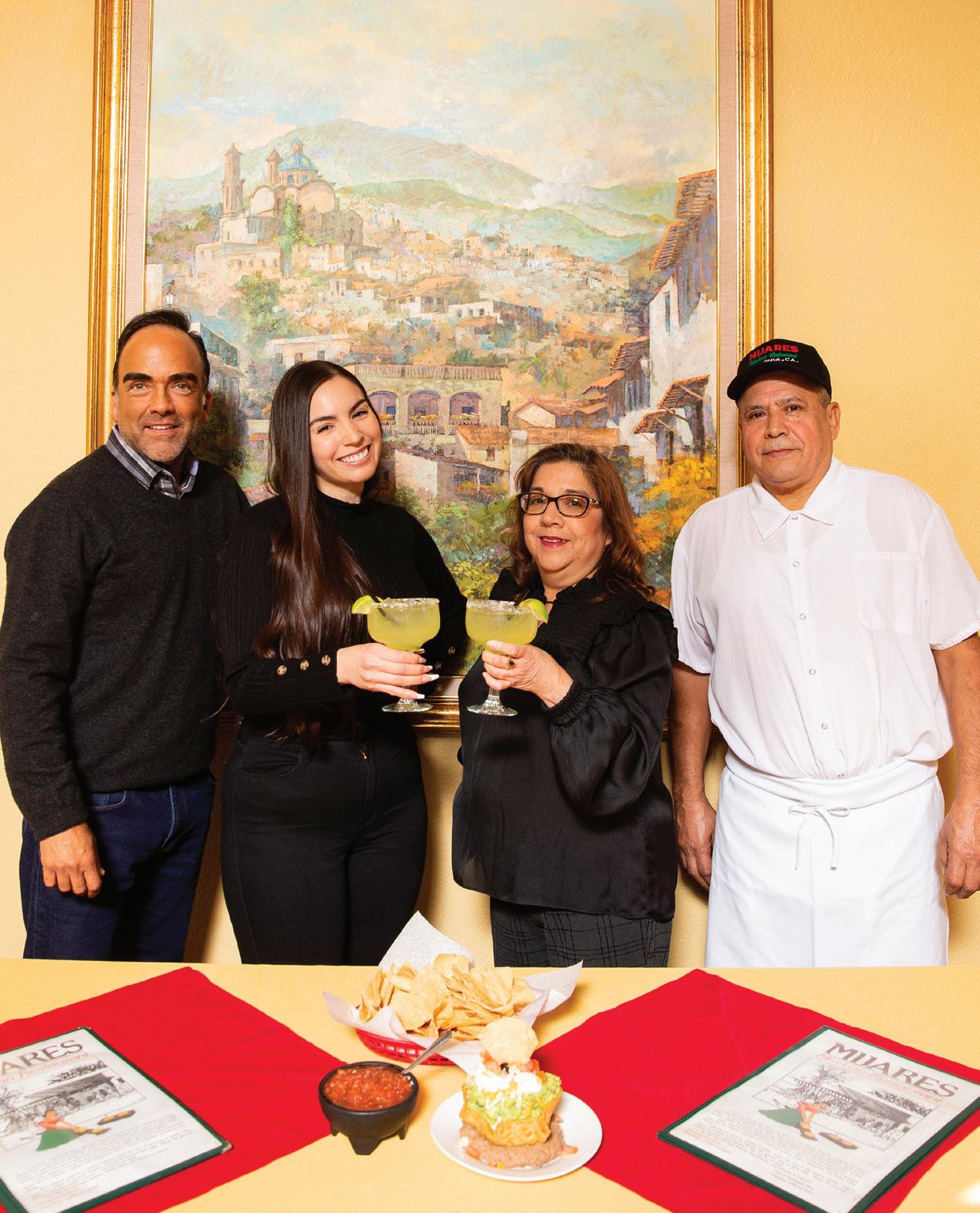
The spine of the Mijares’ menu is built on classic “combination plate” fare that typifies this genre of Mexican American restaurant. Rice and lardlaced refried beans are the requisite accompaniment for these plates rotating between enchiladas, tostadas, quesadillas and tacos, as combination entree choices. It’s a formula that defined what average Americans encountered as “Mexican food” over the better part of the 20th century.
“What sets Mijares apart from other restaurants is we make our own salsas, we make our own masa, we grind for our own tamales. It’s from a volcanic stone from my grandmother’s village in Jalisco. How many can tell you they have a volcanic stone from Jalisco, Mexico, grinding their corn to make tamales?” Tom queries.
Still, a more attentive eye on the Mijares menu can detect family favorites and specials that depart from the otherwise desultory norm. When a diner encounters entrees or dishes named for or attached to family members, friends or customers, it’s often a tip toward originality if not also an added degree of care or attention in composition and prep.
Items like Alicia’s chicken picado with an appended note (Maria’s Fave!) ($22.95) or crab enchiladas (Derek’s Fave!) ($27.95), Primo’s chalupa in a fried flower bowl ($16.95) or Corky’s Fabulous Garbage Burrito ($15.25) are some choices that beckon away from the more predictable and otherwise pedestrian menu options.
Tom explains further, “A lot of the favorites (are named for) people who have been coming here for so long. We named (the dishes) after the person, because it’s what they would always come in and order. Like ‘Corky’s Fabulous Garbage Burrito’: Corky, God rest his soul, was such a nice, nice man who came here for over 50 years. He came in, he didn’t want the menu. He’d say, ‘You know what I want.’”
Mary Alice notes, “We just added Scott’s favorite cheese enchilada on our

continued from page 14
menu (named for) a dear customer and friend of ours who had passed.”
“His name was Scott Christensen. He was my friend. When he passed it was devastating,” Tom interjects.
“He was like our uncle. Cheese enchilada and a margarita every day,” Mary Alice adds. Come here enough, order the same dish and soon your name is on the menu.
The menu also includes traditional breakfast plates ($13.95) with huevos served ranchero style, with machaca, chorizo or as chilquiles. Seafood plates ($27.95) include
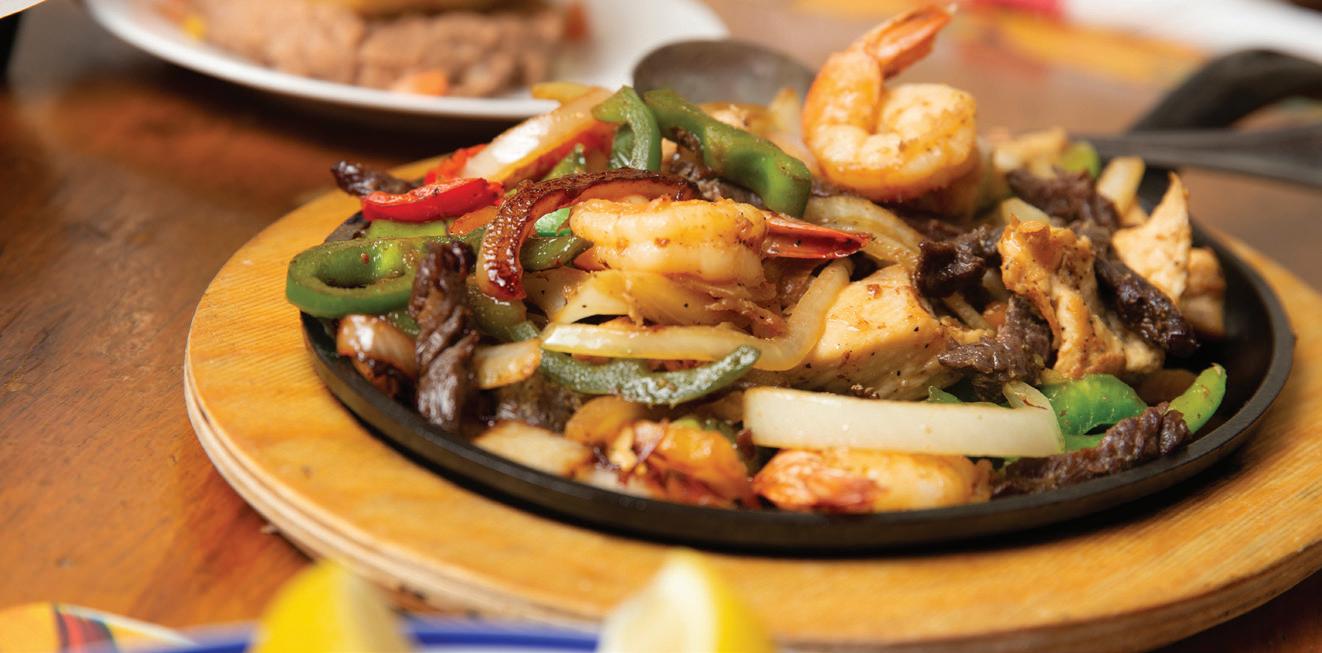
shrimp and lobster enchiladas; “camarones estilo Mexicano” with shrimp sauteed in a wine salsa with onions, bell peppers and diced tomatoes; as well as the aforementioned crab enchiladas.
There are eight options for tostadas ($11.95 to $16.95) and three takes on their “famous” tamales: pork, chicken and vegetable, or green poblano and cheese ($9.95).
It’s also not surprising that the popular advent of the margarita cocktail in the late 1960s and early 1970s created another real excuse to revisit the food.
Mijares has an intriguing and original list of margarita preps. In addition to a selection of 16 flavored margaritas — from blood orange to watermelon — available blended or on ice, there are also 16 “classic” versions incorporating top shelf tequilas and mezcals, from Hornitos plata to Patron Silver ($9.50 to $16.50).
Authenticity snobs might also note the various menu references to “Spanish sauce.” It’s a certifiably authentic remnant of early 20th century colonial influence that can still be found on the menus of Mijares’ hoary legacy competitors in the area as well.
All said, discerning connoisseurs of authentic Mexican cuisine should not be bothered to assess their experience at Mijares. The food at Mijares is as much “American” food as it is “Mexican” but no less authentic for the fact.
It’s the product of diaspora, assimilation and the slow evolution of in-grained family recipes and their
adaptation to cultural taste and trend. That’s how 103-year-old businesses sustain themselves successfully. Allow the place to play to its strengths. So, the next time the LA Dodgers are headed to the World Series — that is to say, this fall — consider Mijares as a place to gather with friends to cheer them on.
Birthdays, quinceaneras, reunions, weddings or wakes: Mijares can be a worthy, felicitous and satisfying destination.
Mary Alice sums it up, “I would really love to thank all of our guests for their support during the most difficult time I’ve ever witnessed. And family is everything, they will get you through the worst. But our customers are our family, and I just want to thank them for helping us get through those tough times.”
“I could have been born into any family. I was born into the Mijares family, and I am so lucky. It’s the truth. This is something special here,” Tom concludes. It’s really no secret.
Mijares
145 Palmetto Drive, Pasadena 626-792-2763, mijaresrestaurant.com
 The fajita trio has chicken, steak and shrimp mixed together.
The fajita trio has chicken, steak and shrimp mixed together.


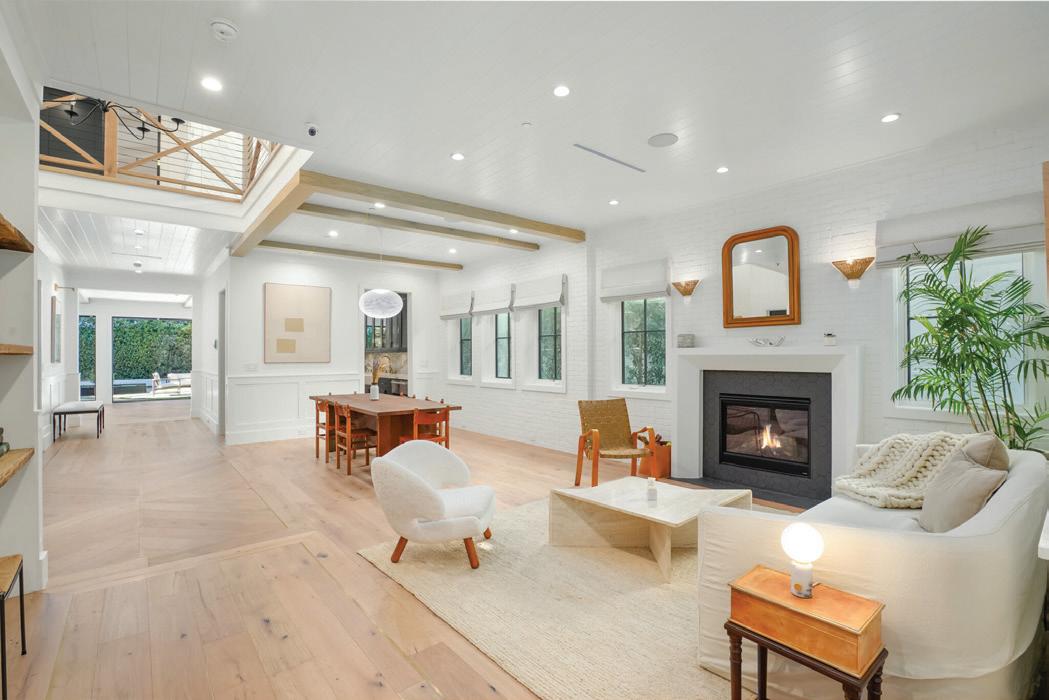



At Advanced Building and Remodeling, we are a team of highly experienced remodeling professionals. We specialize in design-build services, so our team can create your dream space from start to finish. When you decide to take on an endeavor like remodeling your entire home, changing the layout, or even putting an addition on your home, you will be starting a relationship with people who will be in your life for the duration of your renovation, so it is key to have a team of individuals who you can trust and communicate with. We excel at bringing to life the ideas you have for the space you want to transform.
From design and build to renovations and major remodels, the experts at Advanced Building & Remodeling are with you every step of the way!




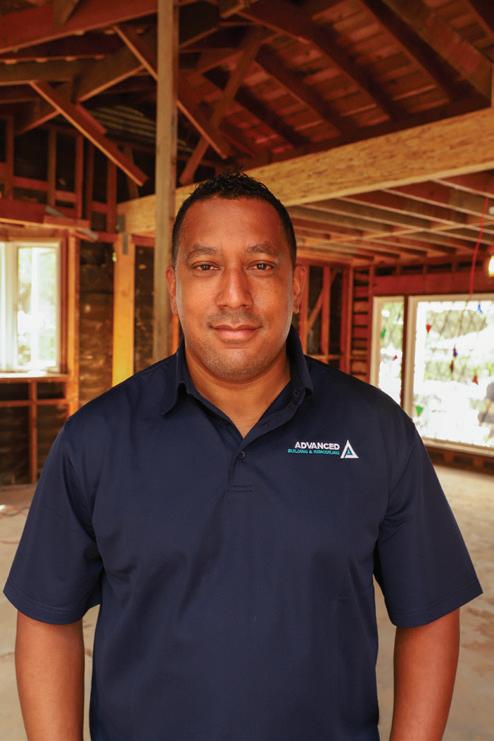
In the depths of the pandemic lockdown, Downtown LA restaurants suffered more acutely than those in other parts of town.
While other spots shut down cold, the popular breakfast and lunch bistro Poppy + Rose were used as a hub of community activism and support for their neighbors.
Its resilient owners, Michael and Kwini Reed, will impart their knowledge as hosts of Masters of Taste from 3 to 7 p.m. Sunday, April 2, at the Rose Bowl in Pasadena. The event benefits Union Station Homeless Services.
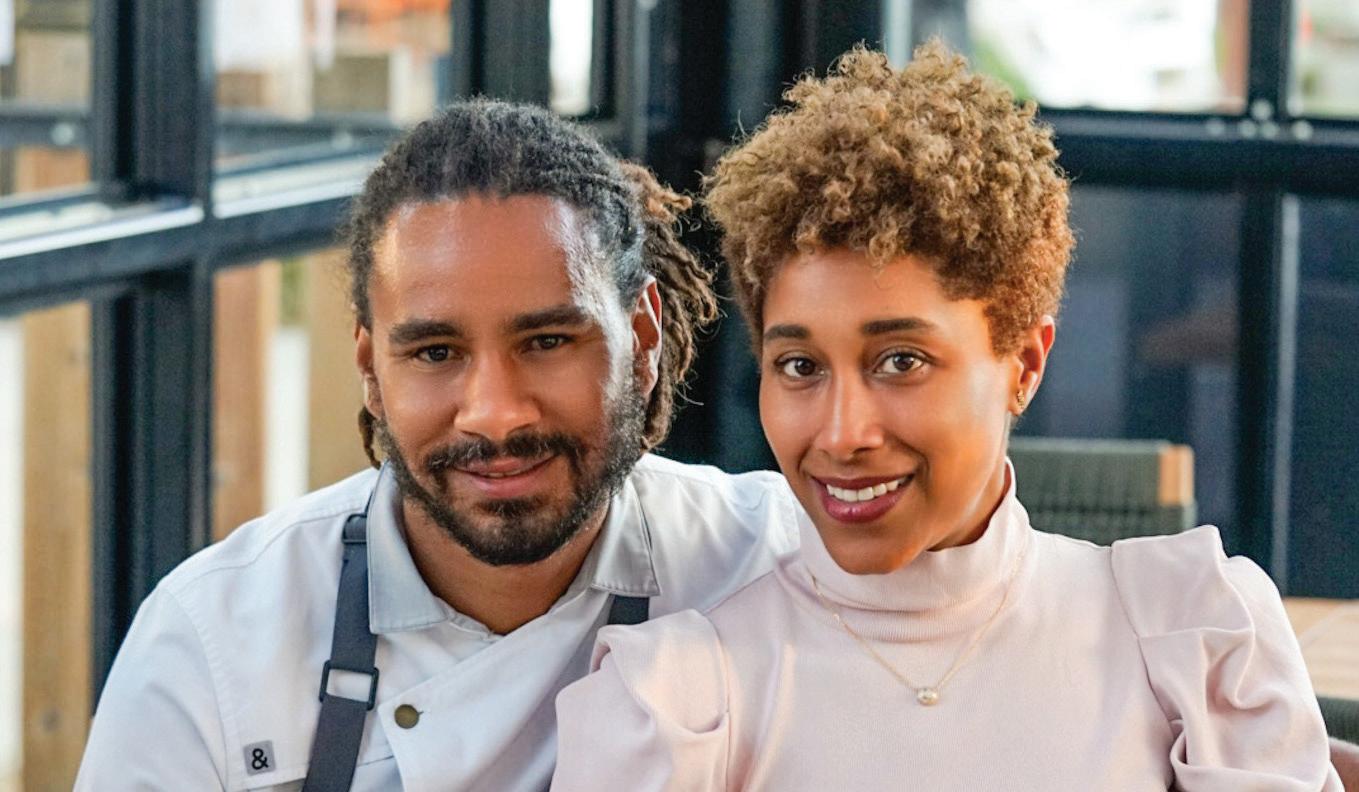
Celebrating its 50th year, the Pasadena-based nonprofit is regarded as one of the most effective
homeless service organizations engaged in the San Gabriel Valley.
“This is their 50th year of operations for Union Station, which is amazing,” Michael says.
“That’s 50 years of serving the community. Let’s reflect that in kind. All of these restaurants are donating time. Let’s go out and really show them that the community loves them.”
The festival features over 100 participating restaurants, breweries, wineries and individual chefs all offering enticing samples of their work, divided into three categories: culinary, sweet and beverage masters.
The latter group will pour cock-
tails, beers, wines, cold brew coffee and pressed juices from the 50-Yard Line Cocktail Bar. Live entertainment is part of the fun.
That said, as hosts, the Reeds are empowered to create a motif for the festival this year.
“Every year the host gets to come up with a theme for what they want to do,” Kwini says. “Ours is basically a backyard picnic kickback.”
Michael elaborates, “So this year we switched it up. We’re not going to do chef demos this year. We’re going to host a mixology competition. We’ll have some of the best bartenders from Los Angeles and Orange County come in and create some beautiful cocktails with some beautiful liquor, sponsored by these reps and have a competition with bartenders this year and really showcase what they can do.
“Then we let the chefs duke it out for ‘best of show’ and have the patrons this year actually vote. So, we’re making it a friendly, fun competition for the vendors, really letting them show what they do best in a friendly competition.”
An Oxnard native, Michael
grew up in a family centered around the kitchen, the backyard barbecue and fresh produce from the garden.
He attended UC Santa Barbara, pursuing a different path. When he was injured as a member of the track team, he changed course.
He was accepted at the venerable Culinary Institute of America in Hyde Park, New York. Before graduating in 2008, he served in the kitchen at The Modern, the noted eatery at the Museum of Modern Art in New York City.
He returned to Southern California, where at the age of 26, he worked at the Michelin-starred kitchen at David Myer’s Sona and Xiomara, benefiting from a recommendation by acclaimed chef and restaurateur Nancy Silverton.
The Reeds met in 2011, when Michael served as executive chef at West Hollywood’s The Standard, where Kwini worked as senior accounting manager.
Kwini also grew up in Southern California and attended Cal State Fullerton, where she graduated with a Bachelor of Science degree in marketing.
The couple’s chemistry led to
a successful marriage and catering operation, Root of All Food, which specializes in “high-end boutique catering, as well as in-home cooking and private events.” It provided the springboard for the 2014 establishment of Poppy + Rose in the Flower District, which needed a breakfast and lunch stop.

When their reliable daily business evaporated overnight with the onset of the pandemic lockdown, Kwini realized Poppy + Rose could answer a higher calling.
The nearby border of Skid Row expanded onto their street, as the newly unhoused pitched tents on their curb. She initiated daily food donations to their new neighbors, using the used stock and leftovers from the day’s service.
A regular customer offered to underwrite a larger donation effort, which helped to keep the restaurant’s kitchen staff activated and employed.
The effort began with 150 meals prepped for Martin Luther King Jr. Hospital and then expanded to the Drew Medical testing program. Under Kwini’s initiative and guidance, Poppy + Rose also partnered with
noted local nonprofit Brown Bag Lady to provide meals for DTLA’s growing homeless population.

In the last two years, Poppy + Rose became an exemplar of how a local restaurant can make the crucial and positive difference in an extended moment of local crisis.
The Reeds’ community-engaged pandemic experience also successfully sustained their business and staff. Ultimately, they opened Poppy + Seed in Anaheim in 2021, bringing with them their charitable endeavors.

“We have kept it going at Poppy + Rose,” she says.
“Orange County is a little bit more difficult, only because the homeless population isn’t as visible. So, it’s hard to figure out but now we’re getting leads to organizations that we can team with. I know last year we did an initiative with Green Bird Cleanup. So, we’re still keeping up our monthly donations with Brown Bag Lady. Poppy + Rose still gives out food on a nightly basis at 3 p.m. It’s become very, very ingrained into our brand. So, it’s going
continued on page 22
continued from page 21
to translate to any other restaurant that we open or any other venture that we do.”
The Reeds’ latest community venture is the nonprofit the U-N-I Coalition, which is set to launch by the end of summer. Designed as a training and job placement program, Poppy + Rose will transform in the evenings to a training kitchen, with guest chefs and industry professionals donating their time to train the disadvantaged and jobless into the culinary industry.
“The whole basis is that we are in this together and the transfer of knowledge is free,” Kwini says.
“It takes nothing from us. We don’t have to look at each other as competitors. We need to look at each other as collaborators. And we can share information with each other in order to make the world a better place.”
A new venture is in the works, as the couple hopes to open a restaurant in San Pedro.
“We have signed the lease to open in West Harbor, which will be our third location,” Michael says.
“It will be a mash between what we do for dinner at Poppy + Seed and our traditional brunch at Poppy + Rose so you have the best of both worlds coming together. We’re super excited about that project.” Expect an opening at the new location by the beginning of next year.
Masters of Taste LA
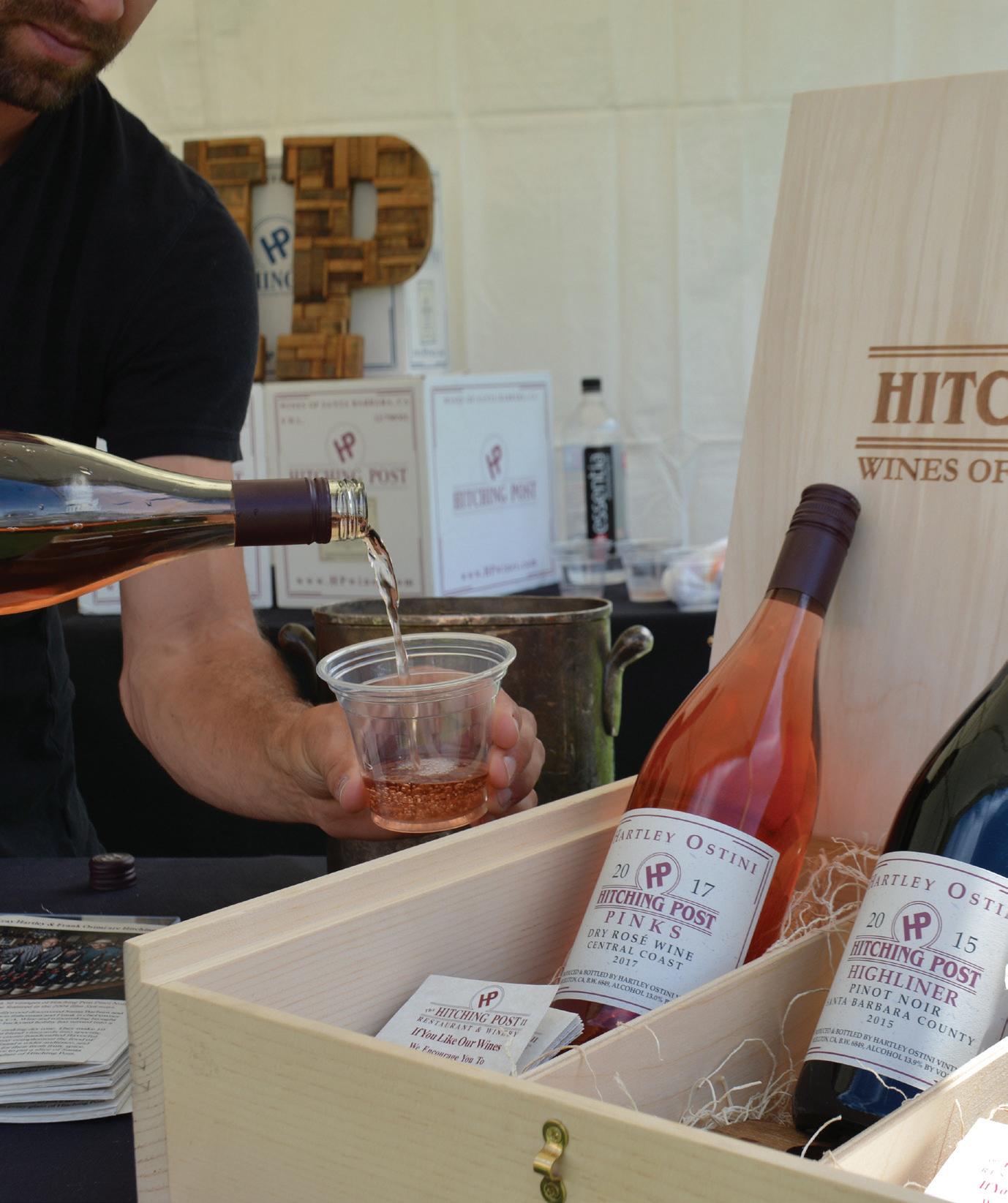
WHEN: 3 p.m. (VIP), 4 p.m. (general admission) Sunday, April 2
WHERE: Rose Bowl, 1001 Rose Bowl Drive, Pasadena COST: $155 general admission; $225 VIP admission. Both tiers allow unlimited tastings of food, wine, craft beer and cocktails INFO: mastersoftastela.com





Sherry Gao has the problems all small-business owners wish they had. Her espresso machine has been malfunctioning due to the sheer volume of coffee running through it since the opening of the Mandarin Coffee Stand in October at the Burlington Arcade on South Lake Avenue in Pasadena.
Pastries often sell out before noon after the hectic morning rush, especially after TikTok exposure. Gao is not a TikTok user but found herself scrambling to keep up with demand, and after chatting with customers, she discovered why. Gao wondered, “Are they saying good things about us on TikTok?” Suffice to say, the reviews are raving.
But the beverages, adorned with latte art and dripping in foam, are not the only things that have customers returning day after day. Some might call Gao a “coffee sommelier.”

She has been working in the LA coffee industry for six years since beginning at Cafe Dulce, a specialty coffee shop in Little Tokyo, whose baristas would go on also to open Be Bright Coffee and Copa Vida. From there, Gao moved to Intelligentsia Coffee and stayed as a barista for three years until the pandemic, when she opened Mandarin Coffee Stand.
Even before working in the coffee industry, while studying hospitality management at the University of Nevada, Las Vegas, Gao always dreamed of opening a café — “I knew I wanted to open a coffee shop even before I started working as a barista. … When I was a barista, I would pay attention and ask questions — I wanted to learn as much as I could.”
The LA coffee scene is small, connected and supportive.
“Business has been great — much better than I expected, and I am so grateful,” Gao says. “I’ve built many relationships with LA coffee people and received a lot of support from Intelligentsia.
“We received a lot of support from the coffee industry in general — a lot of coffee shop owners and OG LA coffee people visited, and then somehow we were trending on social media, so we targeted that group of people as well.”
Mandarin Coffee Stand has seven part-time baristas, most of whom were brought over from Intelligentsia. At the helm of the operation, Gao sources ingredients and formulates the menu. Nearly everything is made in-house, from the syrups to jams used in specialty drinks.
The drinks are as aesthetically pleasing as they are rich and complex, which makes for good business and leads to a diverse clientele. “We get all sorts of people, the coffee-focused people and the social media people,” Gao explains.
It was important for Gao to create a menu with depth, full of flavors that many had never heard of or tried. Popular signature drinks include an osmanthus flower latte with cardamom bitters and a seasonal winter beverage called “toasty” (a rooibos tea and espresso combination with house-made brown sugar inspired by a Hong Kong beverage, Yuenyeung).
Other bestsellers are the pineapple espresso tonic, made with housemade pineapple jam, Chinese crystal rock sugar, and shaken over lime
juice and tonic water, and the Vienna latte, which features house-made sweet whipping cream, a double shot of espresso, and cold milk; Gao described it as “kind of like a coffee dessert — it’s like drinking ice cream.”
To kick off the opening, the cafe hosted a “latte throwdown,” where 30 baristas from across the LA area competed in creating latte art. In the future, Gao would like to organize pour-over and latte art classes so customers can elevate their coffee at home.
Also in the works is a coffee cupping, essentially a coffee tasting, where coffee beans are coarsely ground, steeped and sipped for those interested in learning more about coffee flavor profiles. The coarsely ground beans allow for a concentrated brew, clearly indicating what the coffee will taste like and how it will perform.
In the coming months, Mandarin Coffee Stand will launch roasts from Yunnan, China, along with a tasting menu. Gao explained the distinctive Chinese coffee flavor palate — “Chinese coffee is very tropical, with hints of pineapple and papaya. It’s very sweet and often has notes of tea. “
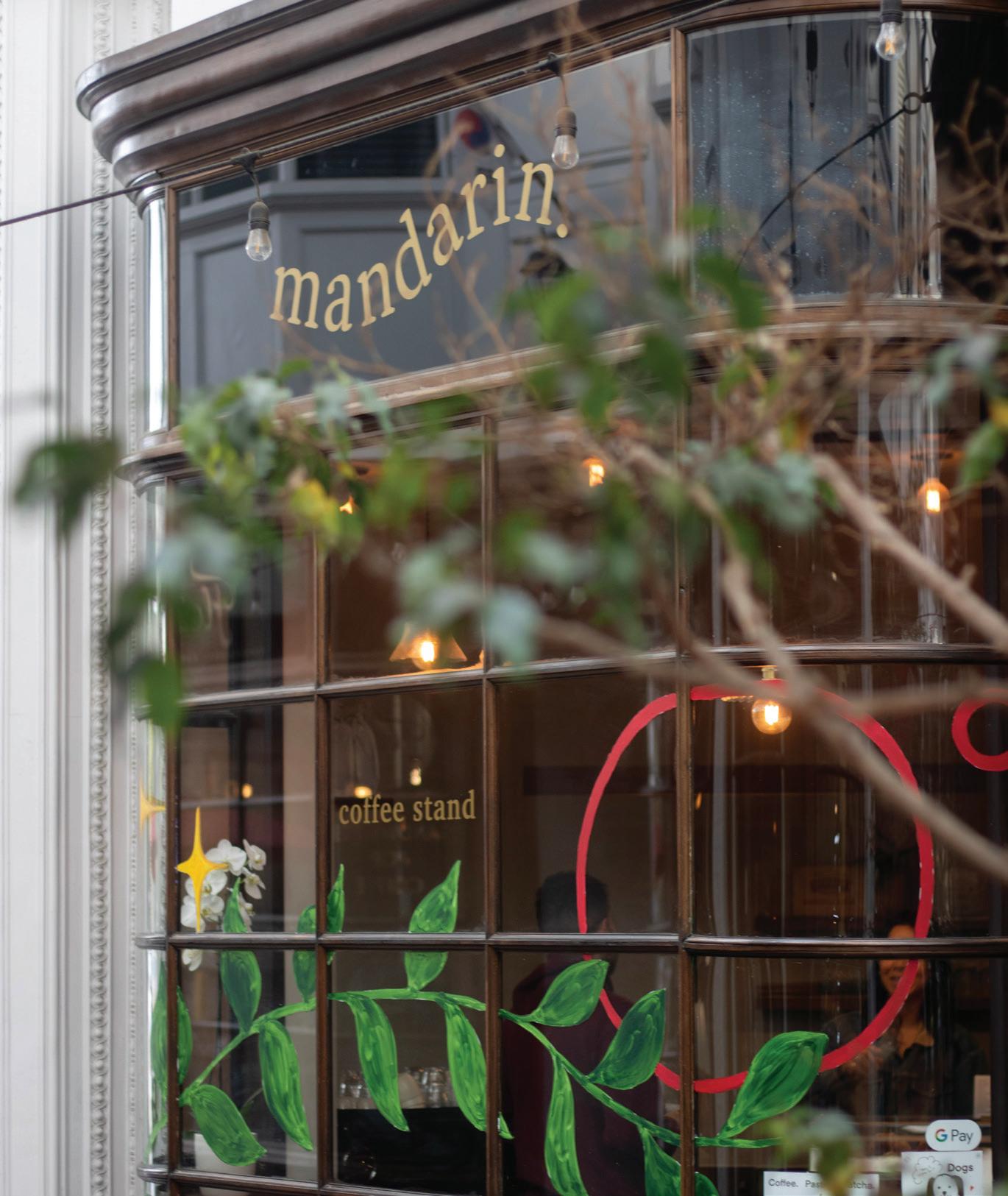
Many people have never heard of, let alone have tried, Chinese coffee.
“It’s amazing to have the opportunity to present Chinese coffee to more people here in LA. As a Chinese person, I’m very proud and grateful that I can do something like this,” Gao said.
“One thing we want to do is highlight specialty Asian coffees. I think that’s also what puts us on the map, and I believe we are the only cafe in LA that serves Chinese coffee. We wanted to highlight Asian coffees and Asian flavors in general.”
Mandarin Coffee Stand
The Burlington Arcade
380 S. Lake Avenue, Suite 111, Pasadena


Instagram: @mandarincoffeestand
8 a.m. to 4:30 p.m. daily
From
Aging is an important part of the wine-making process, and each bottle of wine has a different shelf life. Some wines are meant to be stored for several years before reaching their peak drinking age. The best way to preserve wine to ensure maximum quality and enjoyment is by having a dedicated wine storage area in one’s home.
Nowadays, there are a wide variety of options for showcasing and displaying wine collections, from chic cellars to stylish shelves.
“For most people, it is to have a better control of their inventory,” says Gabriel Davila, owner of GLR Wine Cellars in Los Angeles, which specializes in custom wine cellars and cabinets. “For others it is the beginning of a new hobby and, most of all, convenience so they can keep wine that they like properly stored until they feel like drinking that particular wine.”
According to Jhoiey Ramirez, co-founder and creative director of The Sycamore Collective, a Los Angeles-based bespoke design studio, people’s needs for wine storage have also changed over time.
Each home can have a thoroughly unique way of showcasing its wine selection, including glass enclosures, custom cabinets and shelves, and even dedicated air conditioning or refrigeration.

“In the previous years, wine cellars were in a dark part of the house not meant for display, much like the evolution of kitchens from a back room to a centerpiece,” Ramirez says. “Wine storage has been getting more attention. I believe it’s part of the societal aspect of it. When you’re having a get-together in your home, and you consider yourself a wine connoisseur of some sort, you want to make that obvious and show off your collection by having it in a more accessible area.”
Ramirez points out that there are myriad wine storage and display options available on the market today.
“Most refrigeration brands offer good-looking beverage refrigeration that has a glass front to differentiate it from the food fridge,” Ramirez says. “There’s also a multitude of ready-made hardware options for mounting. Our clients opted to have something more unique in their homes, something more custom and more fitting with the rest of their space that puts the wine display almost as a centerpiece.”
One important thing to take into consideration when adding wine storage to a home is the amount of space one has.
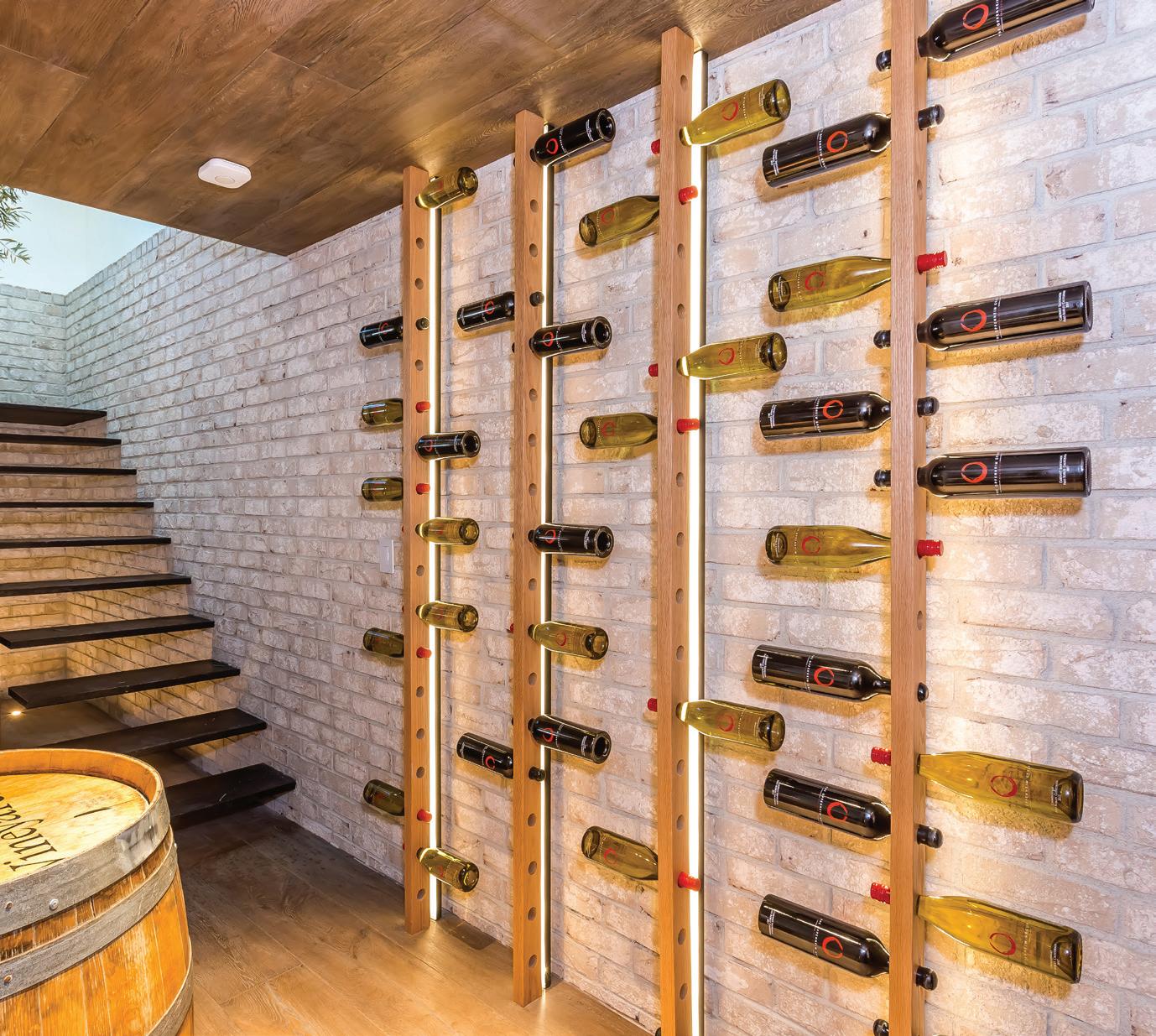
“It all depends on the space available for a wine cellar,” Davila says. “Some people have old homes with California basements, and some are much newer and they don’t have that. The size of the home is very important. We have done everything from large rooms to wine walls and, in some cases, wine cabinets.”
Prior to starting a project, Davila will schedule an in-person meeting with his client to discuss their goals and visions for their wine storage.
“We always like to go to the client’s home to look at the space dedicated for the cellar,” Davila says. “Sometimes it is not ideal for what they want, or there are things with the structure of the home that don’t allow us to do what they want — so then we have to look for other options.”
When choosing an area of the home for storing wine, Ramirez says that temperature and light exposure are two important things
chic cellars to stylish shelves, there are a wide variety of options for showcasing and displaying one’s wine collection in their home.to keep in mind.
“Some areas in the house that get too much light are not good for keeping the wine, so the best option is an area with humidity and temperature control away from windows,” she says.
“Different wines need different temperatures as well. When a collection of wine is for display and there is more than one can fit in the usual refrigeration unit, then a room can be created specifically for that purpose, almost like a walk-in refrigeration.”
One of Ramirez’s clients had an odd corner in the house that he felt would be wasted space if not properly allocated, so he asked if they could make that storage space for his wine.
Ramirez and her team fashioned the corner and lined it with leather, enclosed it in glass, and used the same wood throughout the house to create wine holders on angles replicating the geometry of the house. Then they added a dedicated air-conditioning unit for it to be ideal as wine storage.
“Each home can have a thoroughly unique way of showcasing their wine selection,” Ramirez says. “Another client asked us to use the bottom of their staircase to create a wine forest. We had all these vertical wine holders of different heights mounted on the floor; we lined the walls with leather and added light on each mounting tower. It looked like a fantasy black forest.”

Other unique projects that Ramirez has created for clients based on their request include a 20-foot wine tower in the middle of a circular grand staircase and a refrigerated console under a theater projection screen with custom pullout wine drawers.
“The option is based on what kind of wine enthusiast the client is,” Ramirez says. “The clients who collect wine for consumption are very particular on creating an environment for their wine collection to make sure it’s optimum for taste when the bottle is finally opened. Some clients acquire wine for the sake of collecting, so they want a more display-oriented way of presenting it and not
so focused on what the wine needs. There is absolutely no hard and fast rule — only your imagination (and your budget) can limit the ways you can showcase your wine collection.”
When it comes to installation, Davila and Ramirez agree that timing varies depending on the scale of the project.
“It depends on how extensive the customization is, but it is fairly quick when all the materials are available,” Ramirez says.
“Now if a dedicated room needs its own air conditioning to become a walk-in wine cooling room, it’s very important to consider that it needs a space for the air handler unit and the condenser unit. The additional electrical load of that also needs to be understood before deciding to do it, as it will need a dedicated circuit.”
Maintenance is also required for wine storage, and Davila recommends having it done once a year.
Ramirez adds, “There is definitely some maintenance involved if you are converting an area of your home to be a temperaturecontrolled room for keeping wine. You don’t just want temperature controlled but humidity as well. The air-conditioning unit needs to be checked and filters changed among other things, so it is a commitment for sure. Of course, at that level, you probably have someone managing your home’s maintenance anyway.”
We are an intentional community of older adults who support each other so we can live active, independent lives in our own homes.


 By Luke Netzley
By Luke Netzley
Somewhere in a quiet storage facility, the whispers of a storied past echo from towers of endless shelves. Rows of meticulously labeled wine bottles hold liquid histories spanning across continents and centuries, waiting to be opened or sold by their owners.
Pasadena was once a wine haven with vineyards and wineries that helped make up California’s original wine country. Though development rapidly paved over the Los Angeles basin, this history has not been lost. It is survived by the ecosystem of wine storage businesses and their clients that thrives in the city today.
“Every bottle has a story,” says John Merriam, who has stored his wine at Pasadena Wine Storage on Raymond Avenue for the past eight years. “If you take a wine that’s not too expensive and give it some time in proper storage, it’ll get better and after five years you’ll find out you’ve got a better wine. In 10 years, it might have gone. Finding wine that’ll improve is the name of the game.”
Pasadena Wine Storage, which has operated for over 40 years, contains 14 walk-in lockers and over 500 stacked lockers with 27 cases each. The entire space is complete with security, cooling and humidity control systems to keep the bottles in optimal condition.
It’s a condition that, as Scott Toback, general manager at The Wine Grotto, describes, balances on a razor-thin edge and must be monitored at all times.
“It’s very, very hard to duplicate the environment that we provide in your home,” Toback says. “We have redundant cooling systems. There’re two floors of wine storage. The first floor has two separate and distinct wine air-conditioning units that maintain the temperature at 55 degrees, so if one fails the other one would kick in. On the top floor, we have four separate distinct chillers, air-conditioning units. If one fails, No. 2 kicks in; two fails, three would kick in; three fails, four kicks in.”
While the temperature is kept at 55 degrees, Toback explains that the humidity must be kept at 70% so that the label can maintain its integrity and that the cork doesn’t rise.
Alongside the commercial humidifiers, the facility, which is “fanatically” guarded by a fingerprint-encrypted security system, also includes a commercial backup generator hookup so that, in the event of a “power-loss, end-of-the-world scenario,” Toback is confident that The Wine
Grotto would maintain an acceptable temperature for up to five days.
The primary clientele for businesses like The Wine Grotto and Pasadena Wine Storage are collectors, who see wine as both a financial and emotional investment. At The Wine Grotto, Toback explains that some clients have stored their wine since the business’ founding in 2001. The current waiting list for a walk-in wine cage is two and a half years.

“This is investment-grade wine for the most part,” Toback says. “Most of the clients of The Wine Grotto aren’t really buying this to drink on Friday night. They’re buying wine that needs to be aged properly, that they’re going to drink down the line, wine that’s going to appreciate in value from the time they purchase it.”
For an enthusiast like Merriam, however, wine collection can also be a social endeavor. He founded a wine club that enjoys a weekly tasting session on Zoom.
“Every week, we pick a couple of different cases from (Pasadena Wine Storage), so every couple gets the same bottles and we can compare them on Zoom,” Merriam says. “Frankly, it’s more social than it is about wine, but we have learned a lot about tasting the wines this way.”
Whether born from Tuscan vineyards, Bordelais chateaus or the rolling hills of Napa Valley, wine allows people to connect with a specific time or place with every sip. Through the efforts of Pasadena’s wine storage businesses, these connections may continue to be preserved and shared for generations to come.
When it comes to confections to give your sweetheart, smack dab on the spectrum between elegant and expensive truffles on one end and cheap candies at the other lies the perfectly delicious fudge.

In fact, fudge is tied to some of my fondest memories growing up because it was something so luxurious my mom only allowed me to get it when we went on vacation.
Can you also remember a time you walked around a quiet town and slipped into a local shop for a slice of fudge you saw in the window display? Although I applaud my mother’s efforts to help me make good decisions about my sugar consumption, I’m now at a point in my life where I can make fudge anytime I want. For a pop of lovely bright colors and depth of flavor, I enjoy adding freeze-dried berries and nuts on top. But the sweetest part of this simplified fudge recipe is that it’s best enjoyed with the people you love.
PRETTY AND EASY FUDGE ACTIVE TIME: 20 MINUTES
TOTAL TIME: 3 HOURS, 20 MINUTES | YIELDS 30 PIECES
3 CUPS SEMI-SWEET CHOCOLATE
1 (14 OZ.) CAN OF FULL-FAT SWEETENED CONDENSED MILK
2 TABLESPOONS BUTTER
1/2 CUP PISTACHIOS, CHOPPED
1/2 CUP FREEZE-DRIED RASPBERRIES OR STRAWBERRIES, CHOPPED

MELT CHOCOLATE CHIPS, SWEETENED CONDENSED MILK AND BUTTER IN A SAUCEPAN OVER MEDIUM HEAT. STIR FREQUENTLY UNTIL THE MIXTURE IS SMOOTH.
CAREFULLY POUR CHOCOLATE MIXTURE IN AN 8-INCH SQUARE BAKING DISH LINED WITH PARCHMENT PAPER OR FOIL, ENSURING THE LINER HANGS OVER THE SIDES OF THE DISH.
EVENLY SPRINKLE PISTACHIOS AND FRUIT ON TOP.
REFRIGERATE UNTIL CHILLED AND FIRM, ABOUT 3 HOURS. REMOVE FROM THE PAN BY PULLING UP THE OVERHANGING PARCHMENT PAPER OR FOIL.
SLICE PIECES INTO DESIRED SIZE AND KEEP REFRIGERATED UNTIL READY TO SERVE.
Pasadena Vocal Competition is vowing to keep classical music alive by promoting the world’s next generation of opera singers through its annual concert.
The nonprofit is hosting the 2023 competition’s final-round concert at 7 p.m. Saturday, February 25, at San Marino Community Church. While promoting community interest in opera’s power and beauty, the competition supports aspiring classical singers as they begin their careers.
“It’s really one of the most challenging classical music art forms to execute at a high standard, because there’s not just a symphony orchestra involved — there’s singers without microphones, costumes, singing from memory, props,” says Cathy Miller, the organization’s artistic director and pianist. “It’s such a multitasking art form at the highest level, and it’s so exciting. I would just love to see audiences there and (see them) enthusiastic about it.”
The annual competition showcases aspiring opera singers between the ages of 22 and 32 from all over the country, awarding the winners over $20,000 in cash prizes funded by the Pasadena Area Opera Trust.
This year saw a record 106 applicants, with 42 singers continuing to the finals.
Miller expressed excitement at their ability to host the competition’s final round in person this year, as it had been held remotely the past few years due to the pandemic.
In 2020, Pasadena Vocal Competition held competitions online with a live broadcast. Eighty-seven applicants paid the $50 application fee and submitted videos of their performances, with a dozen deserving singers receiving $25,000. The following few pandemic years’ competitions were held in similar formats.
“It was heartwarming in so many ways because a lot of these kids were making videos in their bathroom, kitchen or living room,” Miller says.
“Just to keep going and not be defeated by the lack of performance opportunities during the pandemic.
“It was so hard for all of these opera singers to not be able to do their craft (in person) during the pandemic, and it’s wonderful that audiences can come back as well,” she adds.
Pasadena Vocal Competition, according to Miller, is not simply a vocal competition giving money to singers. Its mission is to “see the whole chain of opera survive in the United States” and “get people excited about opera.”
“We’re not Europe, where there’s a lot of famous, iconic opera houses that have been around for 500 years. Some of the world’s greatest opera houses are right here in the U.S., but compared to the population, opera is really undersupported in every way,” Miller says.
“We support community interest in opera; we want more Americans to be excited about opera. If we don’t financially support the singers, young people aren’t going to want to be opera singers. And by offering a free event to the public, we’re doing that to get community interest in opera to see the survival of the art form.”
While breathing life into U.S. opera, Pasadena Vocal Competition is an opportunity for the next generation of the world’s top opera singers to perform and receive funding to further their careers.
By awarding these young singers funding, Miller hopes that they can get the best coaching education and voice lessons so they can afford to take auditions in New York, Europe and other destinations across the globe.
She explains that it is especially a struggle for young female opera singers between the ages of 25 and 30 to launch careers in the art, as many operatic voices reach peak maturity after age 30.
After completing their master’s degree, it is necessary for them to get into young artists’ programs to advance their careers, so having an undeveloped voice makes it more difficult.
“There’s a lot of time where they’re really not making a lot of money, and so we need to have the competition to just give them financial and moral support,” Miller says.
Pasadena Vocal Competition’s winners have graced international stages, including the Los Angeles Opera, San Francisco Opera, Santa Fe Opera, and The Metropolitan Opera in New York City.
2021 winner Blake Denson, a baritone, graduated from the Houston Grand Opera Young Artist Vocal Academy and received an assessed contract with Hamburg State Opera in Germany.
Miller also notes the 2022 first-prize recipient, soprano Magdalena Kuzma, went on to win at least five more competitions following her victory at PVC. She was then accepted into the Lindemann Young Artists Development Program at The Metropolitan Opera.

The competition was established in 2018 by Robert Barbera, the founder and chairman, as the Mentoris Vocal Competition.
In 2020, it became a nonprofit organization and was renamed to the Pasadena Vocal Competition. It is now primarily run by Miller, who is supported by a five-member board, most of whom are former opera singers and instructors, and an organizing staff.
The competition is supported by the Barbera Foundation and the Pasadena Area Opera Trust, the latter of which was created by patrons of the Pasadena Opera Guild from 1967 to 2018.
Pasadena Vocal Competition also has a group of donors who give anywhere between $100 and $2,000.
Miller stresses their need for any financial support from the community to keep the organization going. They even greatly appreciate those who attend the final round concert to cheer on the contestants.
“Without those generous folks, we couldn’t do this,” she says.
Pasadena Vocal Competition
WHEN: 7 p.m. Saturday, February 25
WHERE: San Marino Community Church, 1750 Virginia Road, San Marino
COST: Free admission
INFO: pasadenavocalcompetition.org
It takes courage to love. At A Noise Within, they’ve devoted an entire season to stories that show people who dare to love.
They’ve already staged “Animal Farm,” “Radio Golf” and “A Christmas Carol.” On Saturday, February 11, they’ll open William Shakespeare’s “Much Ado About Nothing,” a madcap comedy where several couples travel perilous journeys to wedded bliss.
Remaining shows will be “The Kiss of the Spider Woman” and “The Book of Will.”
Director Guillermo Cienfuegos has directed around the country for decades, but “Much Ado About Nothing” is his debut at A Noise Within, a theater that focuses on the classics.
Cienfuegos describes “A Noise Within” as having an inspirational story — the founders and co-artistic directors Geoff Elliott and Julia Rodriguez-Elliott started the company in several small venues and cleaned houses to keep the theater afloat. Now, they have a facility in Pasadena and are, he says, the premiere presenter of classical theater in Southern California.
“The artistic directors at A Noise Within were just sort of aware of me directing, and they reached out to see if I’d be interested in this,” Cienfuegos says.
“It’s one of Shakespeare’s most wonderful comedies, and I jumped at the chance to be able to do this really great story on this stage. Not a lot of people get that opportunity.”
In “Much Ado About Nothing,” a group of soldiers returns to Sicily to celebrate their victory. Claudio is eager to propose to Hero, whom he fell in
love with before the war. Meanwhile, the sharp-witted duo of Beatrice and Benedick are convinced they shall remain unmarried and snipe mercilessly at each other until their friends and relatives decide to play matchmaker. However, neither couple’s path to bliss is smooth, and the comedy is filled with intrigue, passion and surprise twists.
Cienfuegos, who directed an award-winning version of “Henry V” at Pacific Resident Theatre in 2014, said that whenever he is directing, he must find a personal connection to the story beyond it being a great play.

For Henry V, the thing that sparked his passion was that even though it is technically a history play, it was a story about miracles, the miracle of what the soldiers pulled off. He felt that his actors pulling off the show in a tiny 34seat theater was also a miracle.
“In ‘Much Ado,’ the connection is that it’s a terrifying thing to love somebody,” Cienfuegos says. “It’s terrifying to let yourself love someone and to allow yourself to be loved by someone because you’re making yourself vulnerable. It’s scary to have hope. In every way these characters are all — particularly Benedick and Beatrice, but everyone is — dealing with what are they willing to risk? What are they willing to make vulnerable in order to be their true selves and be happy?”
In what he describes as a precursor to the rom-coms of the 1940s, Cienfuegos puts forward Benedick and Beatrice’s journey as the blueprint for comedic love stories, from the screwball comedies of the 1940s to the modern
continued on page 32
comic love movies. The iconic couple can even be seen in such classic sitcom characters as Sam and Diane in “Cheers.”
“They’ve constructed these really elaborate masks to protect their hearts,” Cienfuegos says. “And what happens in the play is they slowly, slowly, slowly, without a lot of excitement or enthusiasm, slowly lower the mask just to try to see if they’d be willing to let the other person in. The joy of the play is watching the whole process happen.”
This production is set in Sicily just after the island was freed from fascists by U.S. forces in World War II, a move that lets them incorporate swing music and 1940s costuming. Cienfuegos wanted to make the concept of soldiers returning from a victorious battle much more specific in terms of who they were, what the battle was and who the enemy was. The original play takes place in Messina, Sicily, and that setting still felt perfect when moved to the 1940s.
“I thought it’d be wonderful if the play takes place at a time where there was a dark cloud over this part of the world, but now the clouds have parted and we’ve got some joy to celebrate,” Cienfuegos says.
“That way we could make all of the soldiers U.S. forces so that the American audience could relate. I can also use the nostalgia that people have with the music and that time and the events of that war.”
He’ll be combining swing music with period Italian music. During the masked ball in the second act, the characters will dance a tarantella, a choice designed to celebrate the Italian summer. He says the dance is going to be an exciting moment in the show.
And while he didn’t plan it before rehearsals, the specificity of the setting lent itself to character choices by the actors that have contributed to the show’s originality. Joshua Bitton, who plays Benedick, is from Queens, New York, while Stanley Andrew Jackson III hails from Houston.
“It started making me think that we’re setting this thing in World War II, so these army units were made up of people from all over the country,” says Cienfuegos, who is now having cast members speak with their own accents from Queens to Texas to the Appalachia. “It starts to take on this very familiar feeling. I worried about whether it would be too much of an imposition, but the language is just soaring with these actors bringing their own thing to it. It takes on a personality and specificity that pulls it out of what people might expect to hear when they see a Shakespeare play.”
Setting the play in a specific time and specific place, Cienfuegos says, allows the truth of those settings to inform everything in a way that becomes
exciting.
The play takes place in approximately 20 different locations, so Cienfuegos says the design team has created a lot of furniture and scenery on wheels that are moved into place like a jigsaw puzzle.
“It is in keeping with the madcap, screwball approach that I’m taking,” Cienfuegos says.
“I’m being very fun and whimsical with the whole production so when we go from the front of Leonato’s house to the church to the guardhouse where Dogberry and various watchmen stand, it’s all created in a really sort of quick and fun and kinetic way.”
Other performers include Erika Soto as Beatrice, Alexandra Hellquist as Hero, Wes Mann as Dogberry, Tony Pasqualini as Leonato, and Fredrick Stuart as Don Pedro. The scenic design is done by Angela Balogh Calin, lighting design by Ken Booth, composing and sound design by Christopher Moscatiello and costuming by Christine Cover Ferro. Chloe Willey is the production stage manager.
Between the story and the setting, “Much Ado About Nothing” is a highly accessible play for audiences, even those unfamiliar with Shakespeare. It’s mostly in prose, and the plot is fun and easy to follow.

“Some people think they’re going to be forced to drink some medicine,” Cienfuegos says. “This is going to be wacky and fun, and the characters are going to be clearly identifiable. With me, the No. 1 job with Shakespeare is clearing out all the brush so that the audience can really understand and follow it.”
Cienfuegos says he enjoys getting into rehearsals and making a mess to see what they can come out with.
“The process is actually having to get in there,” Cienfuegos says. “You take apart a play and work on it beat by beat, which to me is the most joyful part. We have a bunch of actors, we have a text, and we’re just sort of working through it, messing with it and finding out what every little thing means. That’s just pure joy to me. I feel like if there’s a heaven, it’s an endless rehearsal.”
“Much Ado About Nothing” by William Shakespeare
WHEN: Various times Thursdays to Sundays. Previews February 5 to February 10; performances February 11 to March 12
WHERE: A Noise Within, 3352 E. Foothill Boulevard, Pasadena COST: $25; $18 for students
INFO: 626-356-3100, anoisewithin.org
Erika Soto as Beatrice and Joshua Bitton as Benedick challenge each other with simmering passion in “Much Ado About Nothing.”Southern California’s renowned Vroman’s Bookstore is continuing the new year with more exceptional virtual and in-person programs in February.
Vroman’s in-store events are free and open to the public, unless otherwise noted. Offsite events are most often ticketed and will include a link to buy. Masks are strongly encouraged for those attending the events.
All in-person events will be held at Vroman’s, located at 695 E. Colorado Boulevard, Pasadena, unless otherwise noted.

To register, visit vromansbookstore. com. Those with questions can email email@vromans bookstore.com.

Jessica George, in conversation with Xochitl Gonzalez, discussing “Maame” Noon Thursday, February 2
To register: www.crowdcast.io/e/jessicageorge
Maddie’s life in London is far from rewarding. With an overbearing mother who spends most of her time in Ghana, Maddie is the primary caretaker for her father, who suffers from advanced stage Parkinson’s. At work, her boss is a nightmare and Maddie is tired of always being the only Black person in every meeting.
When her mum returns from her latest trip to Ghana, Maddie leaps at the chance to get out of the family home and finally start living. A self-acknowledged late bloomer, she’s ready to experience some important “firsts.” She finds a flat share, says yes to after-work drinks, pushes for more recognition in her career and throws herself into the world of internet dating. But it’s not long before tragedy strikes, forcing Maddie to face the true nature of her unconventional family, and the perils and rewards of putting her heart on the line.
Smart, funny and deeply affecting, Jessica George’s “Maame” deals with the themes of our time with humor and poignancy, from familial duty and racism, to female pleasure, the complexity of love and the life-saving power of friendship. Most importantly, it explores what it feels like to be torn between two homes and cultures, and it celebrates finally being able to find where you belong.
Kwei Quartey discusses “Last Seen in Lapaz” | 7 p.m. Tuesday, February 7
When a whirlwind romance leads to a brutal murder and the disappearance of a young Nigerian woman, PI Emma Djan resorts to dangerous undercover work to track her down in Accra.
Just as things at work are slowing down for PI Emma Djan, an old friend of her boss asks for help locating his missing daughter. According to her father, Ngozi had a bright future ahead of her when she became secretive and withdrawn. Suddenly, all she wanted to do was be with her handsome new beau, Femi, instead of attending law school in the fall. So when she disappears from her parents’ house in Nigeria the middle of a summer night, they immediately suspect Femi was behind it and have reason to believe the pair has fled to Accra.
During Emma’s first week on the case, Femi is found murdered at his opulent residence in Accra. There are no signs of Ngozi at the scene, and fearing the worst, Emma digs further, discovering that Femi was part of a network of sex traffickers across West Africa.
Emma must figure out which of Femi’s many enemies killed him, but more urgently, she must find Ngozi before she, too, is murdered in cold blood.
Amy Meyerson discusses “The Love Scribe” | 7 p.m. Wednesday, February 8
When Alice’s best friend, Gabby, is reeling from a breakup, Alice writes her a heartfelt story to cheer her up. While reading it in a café, Gabby, as if by magic, meets the man of her dreams. Thinking the story might have some special power to it, Gabby shares it with her sister and other friends, who all find instant love. Word of mouth spreads, and Alice stumbles upon a new calling: to be a love scribe.
But not all the love stories she writes unfold as expected. While Alice tries to harness her extraordinary gift, she is summoned to a mansion in the woods where she encounters the reclusive Madeline Alger and her mysterious library. As Alice struggles to write a story for Madeline, her most challenging assignment yet, she’s forced to confront her own guarded heart. Because maybe there’s a love story waiting to be written for her, too.
Emotional, deeply imaginative and brimming with valuable life lessons, “The Love Scribe” explores love, fate and the power of stories when we choose to believe in them.
Mark Harris discusses “The Black Guy Dies First: Black Horror Cinema from Fodder to Oscar”
7 p.m. Thursday, February 9
continued on page 34
An exploration of the history of Black horror films, after the rising success of “Get Out,” “Candyman” and “Lovecraft Country” from creators behind the acclaimed documentary, “Horror Noire.”
“The Black Guy Dies First” explores the Black journey in modern horror cinema, from the fodder epitomized by “Spider Baby” to the Oscar-winning cinematic heights of “Get Out” and beyond. This eye-opening book delves into the themes, tropes and traits that have come to characterize Black roles in horror since 1968, a year in which race made national headlines in iconic moments from the enactment of the 1968 Civil Rights Act and Martin Luther King Jr.’s assassination in April. This timely book is a must-read for cinema and horror fans alike.
Phil Stamper discusses “Afterglow”
7 p.m. Friday, February 10
Bestselling author Phil Stamper takes the Golden Boys from summer fun to senior year in the next installment of his charming duology.
After a life-changing summer, these four friends are finally ready for senior year.
Gabriel is thrilled to create his school’s first LGBTQ+ advocacy group, but his long-distance relationship is fading from summer love to something else.
Heath feels secure for the first time in years, but with his future riding on a baseball scholarship, each pitch triggers his anxiety.
Reese is set on pursuing a career in fashion design, but his creativity takes him in an unexpected direction, he isn’t yet ready to share.
Sal wants to be in politics, specifically local politics. After a chat with his aunt, he is ready for an unlikely path.
As graduation nears and the boys prepare to enter the real world, it feels like everything is changing fast, including their friendships. Can they find a way to make the most of their senior year even as they eagerly look ahead to the future?
Charmaine Wilkerson discusses “Black Cake”
7 p.m. Monday, February 13
In present-day California, Eleanor Bennett’s death leaves behind a puzzling inheritance for her two children, Byron and Benny: a black cake, made from a family recipe with a long history and a voice recording. In her message, Eleanor shares a tumultuous story about a headstrong young swimmer who escapes her island home under suspicion of murder. The heartbreaking tale Eleanor unfolds, the secrets she still holds back and the mystery of a longlost child challenge everything the siblings thought they knew about their lineage and themselves.
Can Byron and Benny reclaim their once-close relationship, piece together
Eleanor’s true history, and fulfill her final request to “share the black cake when the time is right?” Will their mother’s revelations bring them back together or leave them feeling more lost than ever?
Charmaine Wilkerson’s debut novel is a story of how the inheritance of betrayals, secrets, memories and even names can shape relationships and history. Deeply evocative and beautifully written, “Black Cake” is an extraordinary journey through the life of a family changed forever by the choices of its matriarch.
Johnny Compton discusses “The Spite House”
7 p.m. Wednesday, February 15
Eric Ross is on the run from a mysterious past with his two daughters in tow. Having left his wife, his house, his whole life behind in Maryland, he’s desperate for money — it’s not easy to find steady, safe work when you can’t provide references, you can’t stay in one place for long and you’re paranoid that your past is creeping back up on you.
When he comes across the strange ad for the Masson House in Degener, Texas, Eric thinks they may have finally caught a lucky break. The Masson property, notorious for being one of the most haunted places in Texas, needs a caretaker of sorts. The owner is looking for proof of paranormal activity. All they need to do is stay in the house and keep a detailed record of everything that happens there. Provided the house’s horrors don’t drive them all mad, like the caretakers before them.
The job calls to Eric, not just because there’s a huge payout if they can make it through, but because he wants to explore the secrets of the spite house. If it is indeed haunted, maybe it’ll help him understand the uncanny power that clings to his family, driving them from town to town, making them afraid to stop running.
Liz Climo presents “I’m So Happy You’re Here”
6 p.m. Thursday, February 16
We all need a reminder that we’re loved and we matter, and international bestselling author Liz Climo delivers that dose of warmth and love in “I’m So Happy You’re Here.”
Sometimes we just need a pep talk to remind us that we’re doing our best. With help from her charming animal drawings, Liz Climo encourages us to embrace the joyful moments, get back up after falling down and always love ourselves.
A little book to let someone know how important they are to you or a thoughtful gift you can give to yourself, “I’m So Happy You’re Here” highlights how truly amazing we are. Like a good friend, it will lift you out of low moments and keep you company until they’ve passed, making you laugh and cry while reminding you that you’re loved, you mat-
ter and we’re all really happy you’re here. Walter Mosley discusses “Every Man a King: A King Oliver Novel” 7 p.m. Tuesday, February 21
In this highly anticipated sequel to the Edgar award winner “Down the River Unto the Sea,” Joe King Oliver is entangled in a dangerous case when he’s asked to investigate whether a white nationalist is being unjustly set up.
When friend of the family and multibillionaire Roger Ferris comes to Joe with an assignment, he has no choice but to accept, even if the case is a tough one to stomach. White nationalist Alfred Xavier Quiller has been accused of murder and the sale of sensitive information to the Russians. Ferris has reason to believe Quiller’s been set up and he needs King to see if the charges hold.
This linear assignment becomes a winding quest to uncover the extent of Quiller’s dealings, to understand Ferris’ skin in the game and to get to the bottom of who is working for whom. Even with the help of bodyguard and mercenary Oliya Ruez — no regular girl Friday — the machine King’s up against proves relentless and unsparing. As King gets closer to exposing the truth, he and his loved ones barrel towards grave danger.
Mosley once again proves himself a “master of craft and narrative” in this carefully plotted mystery that is at once a classic caper, a family saga and an examination of fealty, pride and how deep debt can go.
Tara Ison discusses “At the Hour Between Dog and Wolf”
7 p.m. Friday, February 24
“At the Hour Between Dog and Wolf” is the story of a 12-year-old Parisian Jewish girl in World War II France, living “in hiding” as a Catholic orphan with a family in a small village.
When Danielle Marton’s father is killed during the early days of the German Occupation, her mother sends her to live in a quiet farming town near Limoges in Vichy France. Now called Marie-Jeanne Chantier, Danielle struggles to balance the truth of what’s happened to her family and her country with the lies she must tell to keep herself safe. At first, she’s bitter about being left behind by her mother, and horrified at having to milk the cow and memorize Catholic prayers for church. But as the years pass and the Occupation worsens, Danielle finds it easier to suppress her former life entirely, and MarieJeanne becomes less and less of an act. By the time she’s fifteen and there is talk amongst the now divided town of an Allied invasion, not only has Danielle lost the memories of her father’s face and the smell of her mother’s perfume, but her very self, transforming into a strict Catholic and an anti-Semitic, fervent disciple of fascism.
Vroman’s Local Author Day featuring Nita Whitaker, Alden Reimonenq, and Scott D. Dovale
4 p.m. Sunday, February 26
Nita Whitaker presents “When Your Hand is in the Lion’s Mouth: The Life and Wisdom of a Man Named Green”
“When Your Hand is in the Lion’s Mouth” is a narrative non-fiction told in 42 stories that is a father-daughter memoir. The foundational paternal love, wisdom and life lessons shared can father us all, and at 96 years young, he keeps inspiring and teaching us with his foundational practical wisdom. The simplicity and complexity of the life into which he was born informed the wisdom and worldliness he would gain. Born as the second youngest of 19 children in a rural northwest Louisiana farming community, the lion of the Jim Crow South loomed large and oppressively in the 1920s. But, Green Whitaker had the beautiful gift of a family devoted to each other to guide him through. Each anecdote highlights a nugget of Green’s advice about how to navigate life’s challenges with confidence, courage and love, spoken in words that are succinct, amusing and often moving. It gives us a glimpse into the life and earned wisdom of a distinguished Black father named Green, and how he shares his useful life gems with his children, his community and especially his youngest daughter, Nita. Full of historical tidbits, the stories share sage advice, memories and homespun counsel.
Charlotte Maya, in conversation with Mike Kinman, discussing “Sushi Tuesdays: A Memoir of Love, Loss, and Family Resilience”
7 p.m. Tuesday, February 28
This free event is at All Saints Church, 132 N. Euclid Avenue, Pasadena Faced with a shattering loss, a young widow searches for answers, acceptance and family resilience.
After taking her sons on a hike with the family dog one beautiful fall afternoon, Charlotte returned home to find a policewoman, a policeman and a priest in her driveway — there to deliver the news of her husband’s suicide. Charlotte knew her husband had been stressed about work, but she had no idea he was suicidal. She thought he had stayed home to take a nap.
As a young widow, Charlotte cried, cursed, meditated, medicated, downwarddogged and ran as a way to make sense of her husband’s suicide. As the mother of two bereft sons, she summoned her inner strength and clarity in order to provide steady guidance for them to navigate their own ways through the ensuing months and years. Her story offers intimate moments, powerful lessons, as well as practical ways through which not only suicide survivors but any of us experiencing loss can move forward to live lives of joy and purpose.


